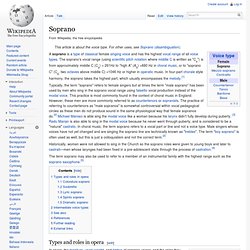

The Royal Opera sur Twitter : "Carmen had its premiere #onthisday in 1875 A classic (Habanera) clip to celebrate: #opera ^C. Carmen - Habanera (The Royal Opera) BBC Radio 3 - Opera on 3, Wagner's Parsifal. Beautiful opera houses from around the world. Opera San Jose: a new season kicks off with The Pearl Fishers. Sherrie Perkovich SAN FRANCISCO, September 12, 2012 – San Jose opera season kicked off with a beautiful rendition of Georges Bizet’s exotic romance, The Pearl Fishers.

Anthony Quartuccio conducted this opera, which is a story of forbidden love, jealousy, betrayal, and tragedy. Set on the ancient tropical island of Ceylon (now Sri Lanka), director Richard Harrell sets the stage well from the very beginning, from happy, dancing, drinking citizens to those filled with rage and fury over a traitorous act. The dichotomy is displayed perfectly and establishes the beauty of Bizet’s work. San Jose Opera: Baritone Evan Brummel as Zurga and tenor Alexander Boyer as Nadir in The Pearl Fishers. Female lead soprano Cecilia Violetta Lopez as Leila instantly captures your attention with her alluring vocals and incredible range. Then, as fate would have it, Leila appears veiled before them as a sacred virgin to help pray to the gods for good weather and safety for their pearl fishermen.
News. Joyce DiDonato - The official web site of Joyce DiDonato. Contralto. A contralto is a type of classical female singing voice whose vocal range is the lowest female voice type,[1] with the lowest tessitura.[2][3] The contralto's vocal range falls between tenor and mezzo-soprano; typically between the F below middle C (F3 in scientific pitch notation) to the second F above middle C (F5), although at the extremes some voices can reach the E below middle C (E3) or the second B♭ above middle C (B♭5).[1] Terminology[edit] "Contralto" is meaningful only in reference to classical and operatic singing, as other genres lack a system of vocal categorization comparable to that generally accepted in the classical context.

Even within current operatic practice, contraltos are often classed as mezzo-sopranos, because singers in each range can cover for those in the other. When appearing separately, the term "contralto" applies only to female singers; men whose voices fall in the same range or higher are known as "countertenors. Coloratura contralto[edit] See also[edit] Mezzo-soprano. A mezzo-soprano or mezzo (English pronunciation: /ˈmɛtsoʊ/, /ˈmɛzoʊ/; Italian: [ˈmɛdzo] meaning "half soprano") is a type of classical female singing voice whose vocal range lies between the soprano and the contralto voice types.

The mezzo-soprano's vocal range usually extends from the A below middle C to the A two octaves above (i.e. A3–A5 in scientific pitch notation, where middle C = C4). In the lower and upper extremes, some mezzo-sopranos may extend down to the F below middle C (F3) and as high as "high C" (C6).[1] Mezzo-sopranos generally have a heavier, darker tone than sopranos. The mezzo-soprano voice resonates in a higher range than that of a contralto. While mezzo-sopranos typically sing secondary roles in operas, notable exceptions include the title role in Bizet's Carmen, Angelina (Cinderella) in Rossini's La Cenerentola, and Rosina in Rossini's Barber of Seville (all of which are also sung by sopranos). Coloratura mezzo-soprano[edit] *denotes a lead role See also[edit] Soprano. A soprano is a type of classical female singing voice and has the highest vocal range of all voice types.

The soprano's vocal range (using scientific pitch notation where middle C is written as "C4") is from approximately middle C (C4) = 261Hz to "high A" (A5) =880 Hz in choral music, or to "soprano C" (C6, two octaves above middle C) =1046 Hz or higher in operatic music. In four-part chorale style harmony, the soprano takes the highest part, which usually encompasses the melody.[1] Typically, the term "soprano" refers to female singers but at times the term "male soprano" has been used by men who sing in the soprano vocal range using falsetto vocal production instead of the modal voice.
This practice is most commonly found in the context of choral music in England. However, these men are more commonly referred to as countertenors or sopranists. ZANNE STAPELBERG. Elīna Garanča. Anna Netrebko.